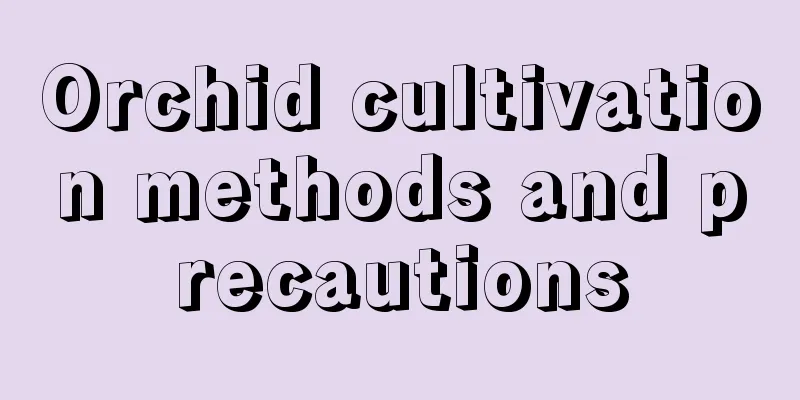Orchid cultivation methods and precautions

1. SoilThe cultivation medium should be loose, fertile, and well-drained, and permeability is the most important principle. If there is a lack of fertilizer, you can supplement it by applying fertilizer later, but it must be water-permeable and not too fine. 2. LightingOrchids need a semi-shaded environment when growing and cannot be exposed to direct sunlight, otherwise the leaves will be burned. 3. HumidityOrchids require relatively high air humidity when being cared for. If the humidity is too low, the leaves will appear dry and burnt, which may lead to leaf diseases. 4. FertilizerOrchids require relatively thin fertilizer and do not like concentrated fertilizer. Fertilizer should be applied thinly and frequently. 5. TemperatureOrchids generally like coolness, and do not like high temperatures or severe cold. Usually it will grow healthier in a temperature environment between 5 degrees and 25 degrees. |
<<: Cultivation methods and precautions of Tiger Pilan
>>: How to grow dragon bone flower
Recommend
How many kilograms can one acre of land produce?
Yield of honey pomelo per mu Honey pomelo is a va...
Do I need to wash the roots of newly bought succulents?
1. Is it necessary to wash the roots? It is not n...
How to plant butterfly flower seeds
The planting time of butterfly flowers If the cli...
How to grow African violets? What are the precautions?
1. How to cultivate African violets 1. Light: Afr...
Can cherries be grown in Jiangxi?
Can cherries be grown in Jiangxi? Jiangxi is suit...
What compound fertilizer is better for growing corn? Is it better to use compound fertilizer or mixed fertilizer for growing corn?
What compound fertilizer is good for growing corn...
How to grow lilies? Can you grow lilies at home?
1. How to plant 1. Time selection: Before plantin...
Can pumpkins be potted?
Can pumpkins be potted? Pumpkins can be grown in ...
How to repot potted roses?
Rose is one of the most suitable flowers for home...
What is the reason why the leaves of white anthurium turn yellow?
Anthurium belongs to the genus Spathiphyllum of t...
Reasons and solutions for osmanthus not blooming
When osmanthus flowers bloom, their fragrance spr...
How to grow Christmas cactus in summer?
Christmas cactus is an epiphytic flower of the ca...
How to propagate boxwood and what to pay attention to
Boxwood propagation method The common propagation...
Can cantaloupe be grown in pots?
Can cantaloupe be planted in flower pots? Muskmel...
Artemisia argyi cultivation technology
Mugwort, also known as wormwood, is a relatively ...









